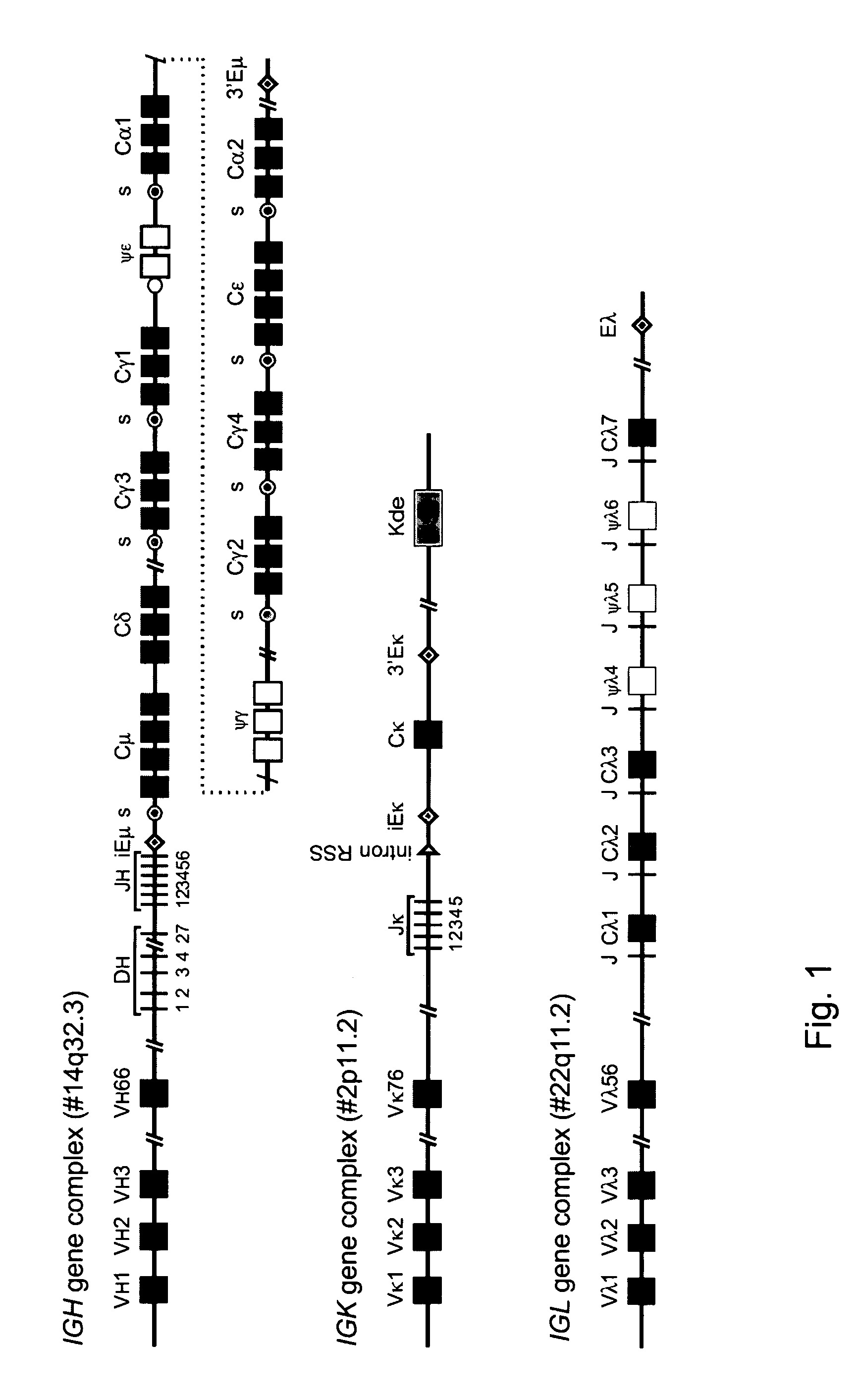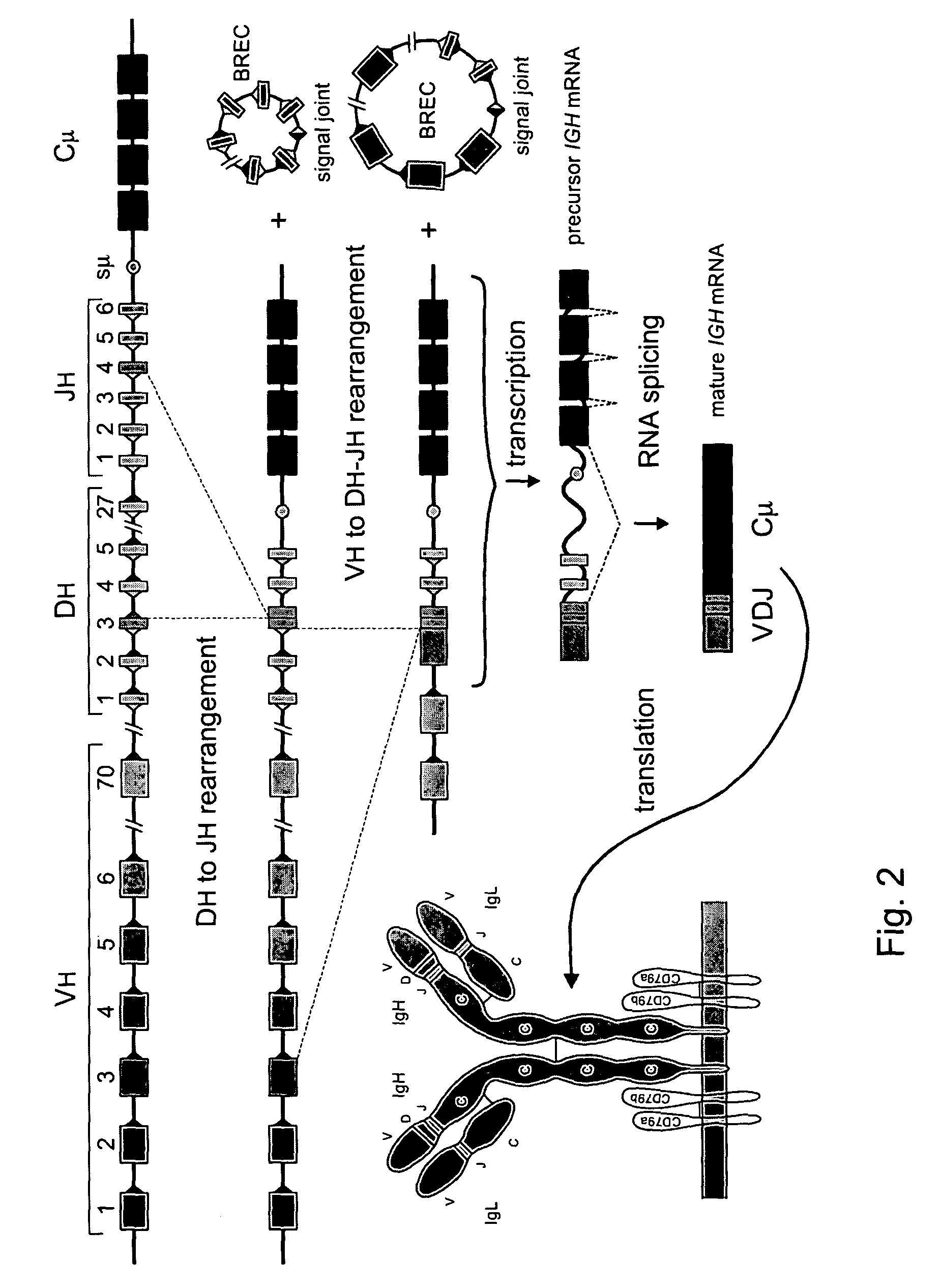Determining the replicative history of lymphocytes
a replicative history and lymphocyte technology, applied in the field of biotechnology, can solve the problems of difficult to obtain direct insight into the origin of b cells in the transplanted recipient, difficult to monitor the efficacy of transplantation, and serotyping not allowing discrimination between antibodies
- Summary
- Abstract
- Description
- Claims
- Application Information
AI Technical Summary
Benefits of technology
Problems solved by technology
Method used
Image
Examples
Embodiment Construction
Experimental Section
Materials and Methods
Generation and Transduction of the intron-RSS-Kde Signal Joint construct into the U698-M B-cell Line
[0051]The KREC signal joint construct was cloned into the retroviral LZRS-IRES-eGFP vector after introducing an EcoRI restriction site 60 bp upstream of the Kde RSS heptamer sequence (FIG. 9, Panel A). The retroviral LZRS-KREC construct and an empty vector control were transfected into Phoenix amphotropic packaging cell lines using Fugene-6 (Roche Molecular Biochemicals, Branchbury, N.Y.). Stable high-titer producer clones were selected with puromycin (1 μg / ml). The U698-M pre-B-cell line was cultured for several days in RPMI 1640 medium containing 10% FCS and antibiotics before transduction using Retronectin-coated petri dishes (Takara, Shiga, Japan) and recombinant retrovirus containing supernatant for two days, with daily replenishing of retroviral supernatant. GFP-positive cells were single-cell sorted using a FACSDiVa cell sorter (BD Biosc...
PUM
| Property | Measurement | Unit |
|---|---|---|
| spacer length | aaaaa | aaaaa |
| stable | aaaaa | aaaaa |
| length of time | aaaaa | aaaaa |
Abstract
Description
Claims
Application Information
 Login to View More
Login to View More - R&D
- Intellectual Property
- Life Sciences
- Materials
- Tech Scout
- Unparalleled Data Quality
- Higher Quality Content
- 60% Fewer Hallucinations
Browse by: Latest US Patents, China's latest patents, Technical Efficacy Thesaurus, Application Domain, Technology Topic, Popular Technical Reports.
© 2025 PatSnap. All rights reserved.Legal|Privacy policy|Modern Slavery Act Transparency Statement|Sitemap|About US| Contact US: help@patsnap.com



